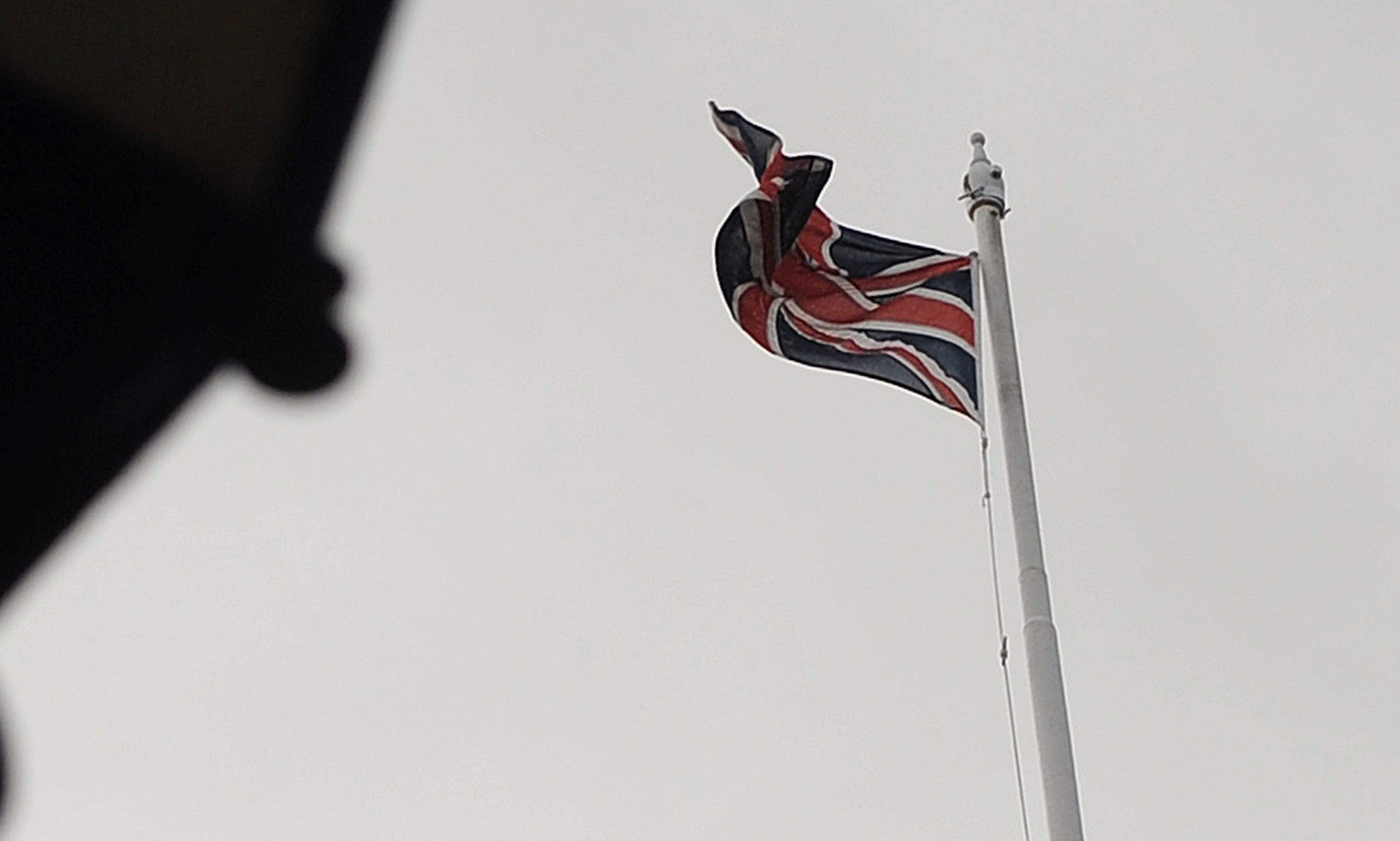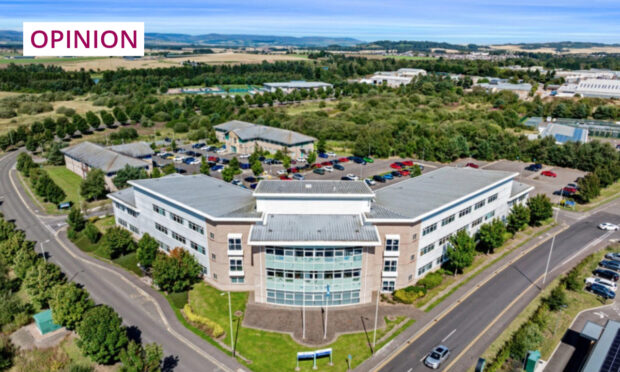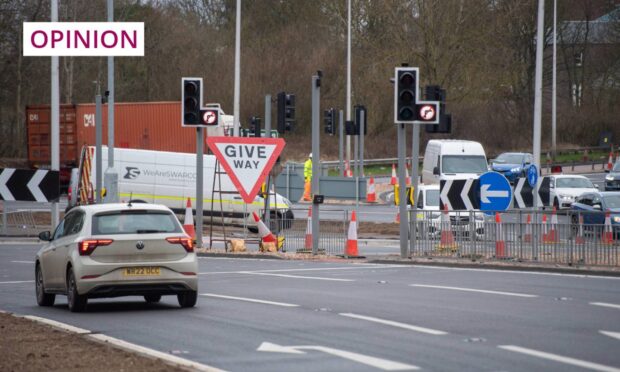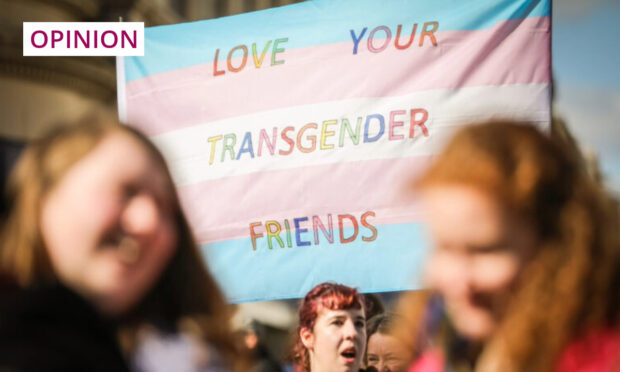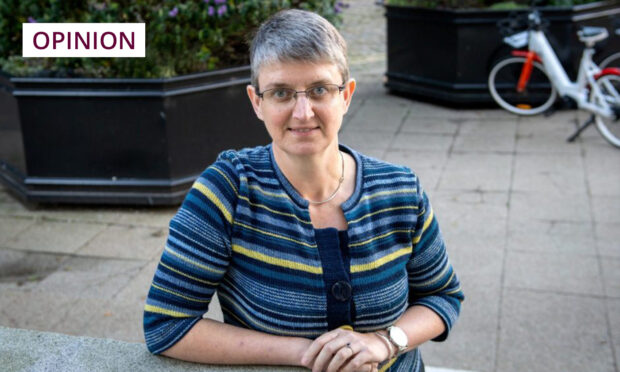Sir, – I was rather bemused by Moira Bowman’s comments (Why do SNP steal our flag?, Courier, January 7).
The last time I looked the SNP are the people of Scotland. In fact, they are the government of Scotland and are not required to “steal” the Saltire, the flag of our sovereign nation.
Ms Sturgeon is the democratically elected first minister of Scotland, sworn in by the Scottish judiciary and lives in the “Saltire bedecked” Bute House in our capital.
We are a sovereign nation, the Saltire “belongs to all Scots”.
As a nationalist party we are free, as any Scottish citizen is, to fly the saltire.
We do not need to steal it!
I would suggest this also answers Mr Thomson’s query (Who owns Scottish saltire, Courier, January 7).
As a footnote my view of the Union Jack is that it represents a union in which I have no faith.
It is not “my flag” and was a creation by King James VI/I in 1707.
You cannot create a new nation out of existing sovereign nations and make both equal.
Brexit has shown vividly this is the case.
In fact the Union Jack is appearing in great abundance on our buildings and our goods and services.
Is this a concerted effort to combat the power of the Saltire.
Someone somewhere is clearly worried.
Dan Wood.
Charles Melvin Gardens,
Kirriemuir.
Capitalism responsible for mass ecocide
Sir, – For the last 30 years, climate scientists have shown, with increasingly uneasiness, how global warming caused by human greenhouse gas emissions has warmed up the planet.
The situation in Australia and in the world was predicted by climatologists. Yet the warnings were ignored.
Politicians in the pocket of big oil dismissed these warnings.
Worse than this they denied the need to eliminate fossil fuel use. This was done to protect corporate profits.
An academic study of 11, 944 scientific papers on global warming from 1991-2011 was done.
This found that 97% agreed with the conclusion that human activities are the only contributing factor to this period of warming.
Quite simply there is no debate. Anyone who says there is is either lying or does not understand how evidence-based science works.
The tobacco companies’ response to the linking of smoking to lung cancer was countered by the tobacco companies setting up propaganda outlets.
The purpose of this was to create a controversy by generating doubt over the link. This strategy staved off regulation.
The same strategy is being employed by fossil fuel companies against the impartial scientists who have determined that the temperature is warming as a result of CO2 emissions.
Global warming is an observable fact.
In the last 25 years some three trillion tonnes of ice has disappeared from the Antarctic. Half of that has been lost in the last five years alone.
One billion animals have burned in Australia.
400,000 people have had to leave their homes in Jakarta due to unprecedented flooding. Ecocide is happening as a result of inaction.
Just 100 companies are responsible for 71% of all global CO2 emissions.
The damage that capitalism has done will be more than the aggregate value of all the goods made since the start of the industrial revolution.
Past prosperity will be paid for by curtailment of life on Earth in the near future.
Alan Hinnrichs.
2 Gillespie Terrace,
Dundee.
Drugs can’t be an easy choice
Sir, – I write in response to Jenny Hjul’s latest column in The Courier (Drugs crisis summit in sight, Courier, January 8).
I really cannot understand why Holyrood cannot seize the initiative on this subject.
What we currently hear, as a solution, is to “decriminalise” the drug scene, so that users do not face prison.
But what about the suppliers?
Surely what is required here is a much tougher police initiative, and maybe a fund created to reward the providers of “intelligence” leading to arrest and asset confiscation for those who are getting rich from the suffering of other human beings.
Then we hear that users are often suffering from mental health issues.
But what is the definition of mental health?
No-one seems to know, and the term is simply being used as a convenient label for purposes of buckpassing.
There should be no appeasement of controlled-substance usage in Scotland.
By all means treat existing addicts through rehab schemes, but let us not encourage wider use by way of making life easier for drug-pushers and their clients.
Derek Farmer.
Knightsward Farm,
Anstruther,
Fife.
Government’s priority is wrong
Sir, – Yet another set of figures show Scotland’s drug death rate per head of population is amongst the worst in the Western World.
This is shocking, all those poor people.
As many of the areas concerned with this – health, education, police – are devolved, you would think there would be a major initiative on this, perhaps all party?
Yet it would appear the Scottish Government is more interested in constitutional change.
This is poor governance.
William Ballantine.
47 The Quarryknowes,
Dean Road, Bo’ness.
Good use of licence cash?
Sir, – I watched the BBC TV programme “Fake or Fortune” which aims to establish whether a picture or artefact is either worth a modest sum or extremely valuable.
The presenters were delighted the painting under examination was worth around £300,000 rather than the £10,000 the owner had paid for it.
This may be an exciting programme but is it really a good way to spend a considerable portion of the BBC income, which is about £318 million, from licence fees?
I do not know, nor can I find from available internet information, the cost of such a programme. I would guess it might be a six figure sum.
On the other hand the BBC director general, who is responsible to no one, can ignore a request from parliament that the BBC agree to fund the previous government contribution of £65 million to provide licence free TV to people over 75 years old.
AA Bullions.
6 Glencairn Crescent,
Leven, Fife.
Missionary work to educate
Sir, – I doubt Harry Key has worn a “dog-collar”, they are incredibly uncomfortable and the idea that my extended family of missionaries wore them except on major religious ceremonies in equatorial Africa is absurd.
They were engineers, medics and teachers.
Missionaries don’t just proselytise, they are expected to serve the local community in all manner of secular ways.
I never served the Church overseas but I did for many years teach HNC physics at night school in a number of technical colleges.
Given the dire state of our education I considered this to be the task of a missionary.
The Rev Dr John Cameron.
10 Howard Place,
St Andrews.
